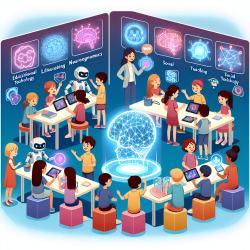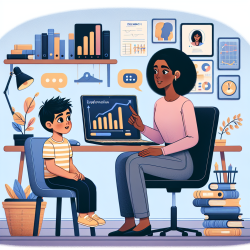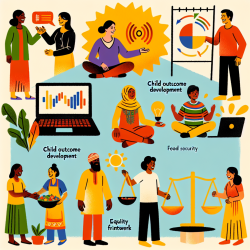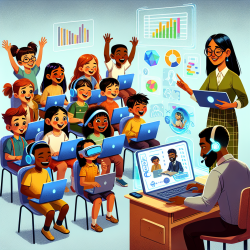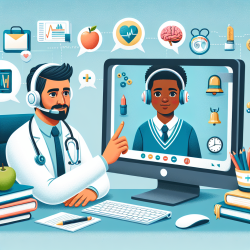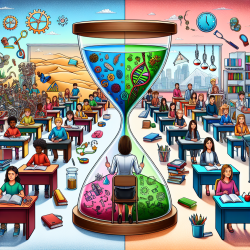Introduction
In the evolving landscape of educational technology, understanding the dynamics of social bonds among children is crucial. The research article "Bringing together multimodal and multilevel approaches to study the emergence of social bonds between children and improve social AI" provides a comprehensive framework for studying these interactions. This blog aims to guide practitioners in leveraging these insights to enhance their skills and encourage further exploration in the field.
The Importance of Social Bonds
Social bonds play a pivotal role in children's development, influencing their cognitive and emotional growth. The research highlights the significance of understanding how these bonds form and evolve, particularly in educational settings. By fostering productive social interactions, educators can create environments that support learning and personal development.
Multimodal and Multilevel Approaches
The study introduces an innovative multimodal and multilevel approach to examine social interactions among children. This involves:
- Multimodal Conversational Behaviors: Analyzing verbal, non-verbal, and paraverbal communication to understand interaction dynamics.
- Interpersonal Rapport: Assessing the harmony and warmth in interactions to gauge social bond strength.
- Collaborative Performance: Evaluating educational task outcomes to measure the impact of social bonds on learning.
- Inter-Brain Synchrony: Using functional near-infrared spectroscopy (fNIRS) to observe neural synchrony during interactions.
Implementing Research Insights
Practitioners can enhance their skills by integrating these research insights into their practice. Here are some actionable steps:
- Encourage Multimodal Communication: Create activities that require children to engage in verbal and non-verbal communication, fostering a richer interaction environment.
- Assess and Foster Rapport: Use tools and techniques to measure rapport among students and implement strategies to enhance it, such as group activities that promote collaboration and empathy.
- Monitor Collaborative Performance: Regularly evaluate group work to understand the impact of social bonds on learning outcomes and adjust teaching strategies accordingly.
- Explore Neural Synchrony: Consider collaborating with researchers to explore the neural aspects of social interactions, providing a deeper understanding of how these bonds influence learning.
Encouraging Further Research
While the study provides a robust framework, there is ample opportunity for further research. Practitioners are encouraged to explore the following areas:
- Longitudinal Studies: Conduct studies over extended periods to observe how social bonds evolve and impact learning over time.
- Diverse Contexts: Investigate how different cultural and social contexts influence the formation and effects of social bonds.
- Integration with Technology: Explore how emerging technologies, such as AI and virtual peers, can be used to enhance social interactions and learning outcomes.
Conclusion
By implementing the insights from this research, practitioners can significantly enhance their ability to foster productive social bonds among children. This not only benefits individual learning outcomes but also contributes to a more cohesive and supportive educational environment. For those interested in delving deeper into the research, the original paper provides a comprehensive exploration of these concepts.
To read the original research paper, please follow this link: Bringing together multimodal and multilevel approaches to study the emergence of social bonds between children and improve social AI.
